Queen Elizabeth National Park is Uganda’s most popular and visited wildlife conservation area. The park lies in the western part of Uganda in the districts of Kamwenge, Rukingiri, Rubirizi and Kasese. Queen Elizabeth National park currently occupies an area of about 764 square miles. The park borders Uganda’s Kibale National Park and is an extension of Congo’s Virunga National Park. The Kyambura gorge, Maramagambo forest, Kazinga Channel, sections of Lake George and Edward are all part of the park.
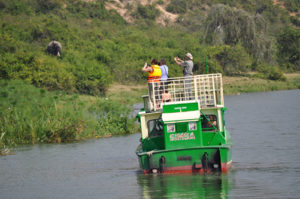 When it was established in 1952, the park was then known as Kazinga National Park. The visit of the British Queen Elizabeth II in the early 1950’s impressed the government then so much the park was named in her honor. Queen Elizabeth National park never experiences long droughts like in the Maasai Maraa or Serengeti as a result of its location within the rain shadow of the Rwenzori mountain ranges. As a result of that, it has green scenery for most of the year. Even if the park didn’t have any wildlife, visitors would still be amazed by the share the sheer natural beauty consisting of great forests, woodlands, plains, lakes, rivers, gorges and other volcanic features (craters and volcanic cones). 95 mammal species have been recorded in the park including the waterbuck, warthogs, topi, Uganda Kobs, spotted hyenas, sitatunga, Serval cats, mangoose, leopards, large forest pigs, L’Hoest’s monkeys, Jackal, hippopotamus, genial, elephants, crocodiles, civet, chimpanzee, Buffaloes, black and white colobus monkeys.
When it was established in 1952, the park was then known as Kazinga National Park. The visit of the British Queen Elizabeth II in the early 1950’s impressed the government then so much the park was named in her honor. Queen Elizabeth National park never experiences long droughts like in the Maasai Maraa or Serengeti as a result of its location within the rain shadow of the Rwenzori mountain ranges. As a result of that, it has green scenery for most of the year. Even if the park didn’t have any wildlife, visitors would still be amazed by the share the sheer natural beauty consisting of great forests, woodlands, plains, lakes, rivers, gorges and other volcanic features (craters and volcanic cones). 95 mammal species have been recorded in the park including the waterbuck, warthogs, topi, Uganda Kobs, spotted hyenas, sitatunga, Serval cats, mangoose, leopards, large forest pigs, L’Hoest’s monkeys, Jackal, hippopotamus, genial, elephants, crocodiles, civet, chimpanzee, Buffaloes, black and white colobus monkeys.
Queen Elizabeth national park is a lion conservation unit and is home to over 200 lions including the intriguing tree climbing lions. Over 490 species of birds have been sighted in the park.
The main local tribes living near the parks boundaries are the Banyankore, Bakiga and Bakonjyo, The Bakiga and Bakonjo depend on subsistence agriculture while the Banyankore are known pastoralists. Salt mining is a popular economic activity especially among the Bakiga living near the park. The Uganda Wildlife Authority manages the park while also collaborating with several wildlife conservation organizations and teams of international and local researchers. Queen Elizabeth national park is close to Bwindi impenetrable forest, Kibale Forest National Park and Mgahinga National Park. This implies that visitors can combine a full wildlife safari and gorilla trekking in Bwindi Forest.
Accessing Queen Elizabeth National Park
Travelers can reach the park by air or road. The distance from Kampala to the park through Mbarara is about 420 kilometers and takes about 8 hours of driving. From Lake Mburo National Park, the driving time is six hours while from Fort Portal town, it is four. The main roads are all well paved (made of tarmac) but those leading to and inside the park are made of hard soil.
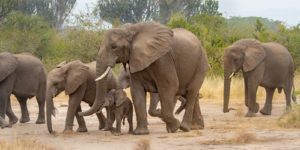 One can use public of private vehicles to reach the park gate but no public commercial vehicles are allowed in the park. Public buses begin leaving the bus park in Kampala for Kasese very early in the morning throughout the week. The cost of a bus from Kampala to Kasese is about $4. Public buses in Uganda take long to get full and rarely arrive on time. The arrival time depends on whether the bus gets full on time or on overall traffic around along the road to the destination. Moreover most of the buses make frequent stops to drop and pick passengers in the small towns along the way.
One can use public of private vehicles to reach the park gate but no public commercial vehicles are allowed in the park. Public buses begin leaving the bus park in Kampala for Kasese very early in the morning throughout the week. The cost of a bus from Kampala to Kasese is about $4. Public buses in Uganda take long to get full and rarely arrive on time. The arrival time depends on whether the bus gets full on time or on overall traffic around along the road to the destination. Moreover most of the buses make frequent stops to drop and pick passengers in the small towns along the way.
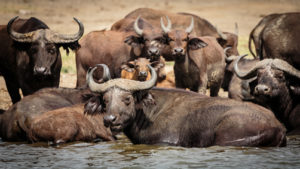 As already noted, public buses do not go to the park. One needs to hire a taxi or motorcycle from the main highly to the Katunguru park gate or Mweya at another cost. The best way to travel to Queen Elizabeth National Park is to use the services of a tour operator. This is the safest, most comfortable and reliable means of getting to the park and ensuring the safari goes as planned. Tour operators tend to keep time and endeavor to make the journey as enjoyable as possible for the traveler. They also know the park in and out including the right people to contact in case of anything.
As already noted, public buses do not go to the park. One needs to hire a taxi or motorcycle from the main highly to the Katunguru park gate or Mweya at another cost. The best way to travel to Queen Elizabeth National Park is to use the services of a tour operator. This is the safest, most comfortable and reliable means of getting to the park and ensuring the safari goes as planned. Tour operators tend to keep time and endeavor to make the journey as enjoyable as possible for the traveler. They also know the park in and out including the right people to contact in case of anything.
Visitors who wish to avoid the long driving time from Entebbe can hire a chartered flight from Kajjansi airstrip or Entebbe international airport to airstrips in Ishasha, Kasese or Mweya. One needs to hire a private car to take them to the park offices or their hotel from the airstrip. Tour Operators usually send a driver/guide to wait for the clients and transfer them from the airstrip to the park or lodge.
Attractions in Queen Elizabeth National Park
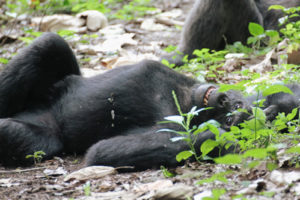 Queen Elizabeth national park is one of the places that justify the description of Uganda being “the pearl of Africa”. The scenery is stunning with beautiful forests, woodlands, Savanna, swamps, lakes, rivers, craters, gorges and landscape. International visitors to this park will never run short of activities. In fact, they might find themselves struggling to complete all of them. The key attractions are nature walks, games drives, boat cruises, chimpanzee trekking, the tree climbing lions and bird watching. If you want to see all the big 5 mammals in Uganda, then you might want to check out our 6 days safari in Murchison Falls and Queen Elizabeth National Park package.
Queen Elizabeth national park is one of the places that justify the description of Uganda being “the pearl of Africa”. The scenery is stunning with beautiful forests, woodlands, Savanna, swamps, lakes, rivers, craters, gorges and landscape. International visitors to this park will never run short of activities. In fact, they might find themselves struggling to complete all of them. The key attractions are nature walks, games drives, boat cruises, chimpanzee trekking, the tree climbing lions and bird watching. If you want to see all the big 5 mammals in Uganda, then you might want to check out our 6 days safari in Murchison Falls and Queen Elizabeth National Park package.
Game Drives: This is the most popular activity allowing you to see 95 percent of the mammals you would see in the Serengeti but with better scenery and landscape that includes forests, savanna grasslands, swamp lands, acacia woods, crater lakes, gorges and the nearby Rwenzori Mountains. The 3-4 hour games drives start in the early morning to any of the three sectors – the Kasenyi plains (near Kazinga Channel), Ishasha sector (tree climbing lions) or the Katwe crater fields. The crater lakes region has beautiful landscape with large craters and salt lakes that were formed thousands of years ago. The crater floors are a water source that attracts elephant’s flamingos, flamingos and other creatures during the drier season. The Kasenyi plains in the northern part of the park are arguably the most scenic and best places to spot wildlife in Queen Elizabeth national park. The Uganda Kobs use the plains as breeding grounds. The plains also attract other antelope species, buffaloes, Elephants and predators like Hyenas and lions – making it a perfect place to watch the battles between the big cats and herbivorous animals.
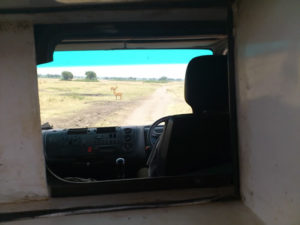 Whichever sector you choose to go for the game drive, prepare to be led by guides and park ranges to the best spots for game viewing from the safety and comfort of a four wheel drive car. The morning game drive is particularly interesting because it allows you observe the night hunters like hyenas and leopards retreating to their dens after feasting on the nights kill. Night game drives are perfect for watching lions, leopards and hyenas making a kill while also observing night birds. Game drives cost $30 and an extra $20 if moving with a ranger from the Uganda Wildlife Authority. Moving with a tour company guide and park ranger makes the safari more enriching. Game rangers can take travelers to the best spots for animal viewing while also sharing details about the various animals seen along the way. For the night game drives, you may need to reserve an extra $20 for hiring a spotlight. All payments are made at the Information Centre in Mweya or at the park gates.
Whichever sector you choose to go for the game drive, prepare to be led by guides and park ranges to the best spots for game viewing from the safety and comfort of a four wheel drive car. The morning game drive is particularly interesting because it allows you observe the night hunters like hyenas and leopards retreating to their dens after feasting on the nights kill. Night game drives are perfect for watching lions, leopards and hyenas making a kill while also observing night birds. Game drives cost $30 and an extra $20 if moving with a ranger from the Uganda Wildlife Authority. Moving with a tour company guide and park ranger makes the safari more enriching. Game rangers can take travelers to the best spots for animal viewing while also sharing details about the various animals seen along the way. For the night game drives, you may need to reserve an extra $20 for hiring a spotlight. All payments are made at the Information Centre in Mweya or at the park gates.
Bird watching: Queen Elizabeth National Park is a top birding destination on Uganda. The full list of the birds in the park can be found at the Bird Observatory in Mweya. Birders on a tour of Queen Elizabeth National Park will be greatly impressed with numerous species inhabiting the forests like Budongo, the Kazinga Channel, the plains, craters and gorges like Kyambura. 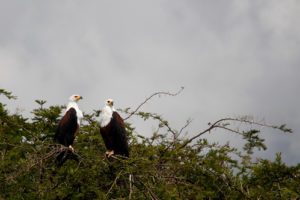 During certain seasons of the year, millions of migratory birds come to escape the harsh winters in Europe making the park a true birders heaven. Among the bird species to look out for are the Yellow-backed, Yellow wagtails, Yellow throated Cuckoo, Yellow backed Weavers, Wood sandpipers, Winding and Carruther’s Cisticolas, White-winged Warbler, White-winged Terns, White-tailed Lark, White-faced Whistling, White and Abdim’s Storks, Whalberg’s Eagle, Water Thick-knee, Verreaux’s Eagle Owl, Swamp Fly-catcher, Spur-winged and African Wattled Plovers, Spotted Redshank, Slender-tailed Mourning Dove, Slender-billed, shoebill stork, Sedge warbles, Saddle-billed Storks, Ringed Plover, Red-chested Sunbirds, Pin-tailed Whydah, pink-backed pelican, Papyrus Gonolek, Papyrus canary, Open-billed Stork, Northern Pochard, Martial Eagle, Malachite and Pied Kingfishers, Little Stint, Lesser Masked Weavers, Lesser and
During certain seasons of the year, millions of migratory birds come to escape the harsh winters in Europe making the park a true birders heaven. Among the bird species to look out for are the Yellow-backed, Yellow wagtails, Yellow throated Cuckoo, Yellow backed Weavers, Wood sandpipers, Winding and Carruther’s Cisticolas, White-winged Warbler, White-winged Terns, White-tailed Lark, White-faced Whistling, White and Abdim’s Storks, Whalberg’s Eagle, Water Thick-knee, Verreaux’s Eagle Owl, Swamp Fly-catcher, Spur-winged and African Wattled Plovers, Spotted Redshank, Slender-tailed Mourning Dove, Slender-billed, shoebill stork, Sedge warbles, Saddle-billed Storks, Ringed Plover, Red-chested Sunbirds, Pin-tailed Whydah, pink-backed pelican, Papyrus Gonolek, Papyrus canary, Open-billed Stork, Northern Pochard, Martial Eagle, Malachite and Pied Kingfishers, Little Stint, Lesser Masked Weavers, Lesser and 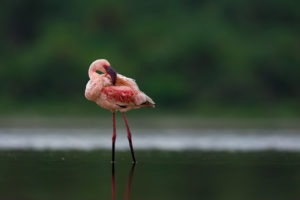 Greater Flamingo, Knob-billed Ducks, Jack Snipe, Grey-headed Kingfishers, Grey-headed Gull, Grey-capped Warbler, Grey Kestrel, Great-white and Pink-backed Pelicans, Greater Swamp and winged Warblers, Great white and Pink-backed Pelicans, Great and Long-tailed Cormorants, Gabon and Slender-tailed Nightjars, Eurasian Wigeon, Curlew Sandpipers, Corncrake, Common Teal, Common Squaco Heron, Common Snipe, common sand Martins, common Greenshank, Collard Pranticles, Chapin’s flycatcher, Brown Snake Eagle, brimstone Canary, bright coloured Saddle-billed Stork, Black-tailed Godwit, black-rumped buttonquail, Black-headed Gonoleks, Black Crake, Black Bee-eater, Bateleur, Bar-tailed Godwit, African White-tailed Lark, African skimmer, African Open-billed Stork, African Mourning Dove, African Jacana, African Harrier Hawk, African Fish Eagle, African Broadbill, and African beautiful Black-headed Gonolek.
Greater Flamingo, Knob-billed Ducks, Jack Snipe, Grey-headed Kingfishers, Grey-headed Gull, Grey-capped Warbler, Grey Kestrel, Great-white and Pink-backed Pelicans, Greater Swamp and winged Warblers, Great white and Pink-backed Pelicans, Great and Long-tailed Cormorants, Gabon and Slender-tailed Nightjars, Eurasian Wigeon, Curlew Sandpipers, Corncrake, Common Teal, Common Squaco Heron, Common Snipe, common sand Martins, common Greenshank, Collard Pranticles, Chapin’s flycatcher, Brown Snake Eagle, brimstone Canary, bright coloured Saddle-billed Stork, Black-tailed Godwit, black-rumped buttonquail, Black-headed Gonoleks, Black Crake, Black Bee-eater, Bateleur, Bar-tailed Godwit, African White-tailed Lark, African skimmer, African Open-billed Stork, African Mourning Dove, African Jacana, African Harrier Hawk, African Fish Eagle, African Broadbill, and African beautiful Black-headed Gonolek.
Launch Cruise: This boat cruise is organized along the Kazinga Channel which is one of the best places to view wildlife in Africa. This channel connects Lake George to Lake Edward and is the single point where most of the parks animals gather to drink, hunt and bathe. During the bird migration season, the species of birds found here are more than those found in North America. The sheer density and variety of wildlife at the Kazinga channel will impress even those who have already gone for several safaris elsewhere. Hippos, water birds and crocodiles rule the waters while elephants, antelopes and predators like leopards drink water in the shallow ends of the channel. Tickets for this activity are sold at the Visitor Information Centre in Mweya $30. The activity is organized in shifts throughout the day with an option of using the cheaper public boats of more expensive private boats owned by Mweya Safari lodge.
Spot Tree Climbing Lions: The Queen Elizabeth national park hosts the rare tree climbing lions in the Ishash sector. They are not a sub-species or any different from the lions found in Kasenyi sector or other national parks in Uganda. 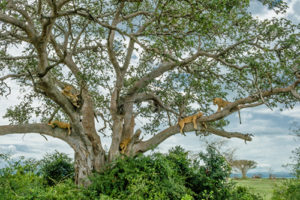 It happens that the lions here have adapted to life spent climbing the numerous fig trees after hunting in the morning or during the afternoon heat. Scientists have not come up with a clear explanation of why these lions climb up the trees but there are theories that they do so because of the insects and parasites (like Tsetse flies) on the ground. Game drives are organized to the Ishasha sector with the main purpose of spotting the lions up on the trees. Apart from the lions, the Ishasha sector also has mammals like warthogs, buffaloes and elephants. The Ishasha sector is located near the highway leading to Bwindi and hence a perfect stopover for those intending to see the lions and gorillas in Bwindi Impenetrable forest National Park.
It happens that the lions here have adapted to life spent climbing the numerous fig trees after hunting in the morning or during the afternoon heat. Scientists have not come up with a clear explanation of why these lions climb up the trees but there are theories that they do so because of the insects and parasites (like Tsetse flies) on the ground. Game drives are organized to the Ishasha sector with the main purpose of spotting the lions up on the trees. Apart from the lions, the Ishasha sector also has mammals like warthogs, buffaloes and elephants. The Ishasha sector is located near the highway leading to Bwindi and hence a perfect stopover for those intending to see the lions and gorillas in Bwindi Impenetrable forest National Park.
Chimpanzee Trekking at the Kayambura Gorge: Chimpanzees are one of the most intriguing primates on earth. They are very intelligent compared to even the larger gorillas. Chimpanzees can be tracked at the Kyambura Gorge of Queen Elizabeth National Park. The Kyambura gorge is a depression/valley in the western section of the park that was created by the strong waters of river Kyambura. The Gorge is 16 Kilometers long, 100 meters deep and 500 meters wide. The gorge has now been covered by thick forests and water streams. This underground forest is home to several species of primates including baboons, Black-and-white Colobus and Red tailed monkeys. 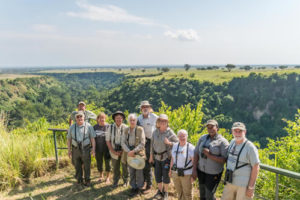 From the viewing platform above the gorge, tourists can spot many of the creatures down on the tree tops in the vast valley. Visiting the gorge is not all about primates but also an opportunity to see birds, snakes, butterflies and other water bodies. It is also an opportunity to learn about vegetation/species found nowhere else on earth. The two to four hours Chimpanzee tracking at the Kyambura gorge costs $50 and only eight permits are issued out each day. All the chimpanzees in the valley are habituated and bookings are done at the Information Centre in Mweya. The chances of seeing chimps are very high in the morning though not compared to Kibale National Park. If you are interested in combing game drives and chimpanzee tracking in Kyambura Gorge, you should check out this 4 Days Queen Elizabeth National Park package.
From the viewing platform above the gorge, tourists can spot many of the creatures down on the tree tops in the vast valley. Visiting the gorge is not all about primates but also an opportunity to see birds, snakes, butterflies and other water bodies. It is also an opportunity to learn about vegetation/species found nowhere else on earth. The two to four hours Chimpanzee tracking at the Kyambura gorge costs $50 and only eight permits are issued out each day. All the chimpanzees in the valley are habituated and bookings are done at the Information Centre in Mweya. The chances of seeing chimps are very high in the morning though not compared to Kibale National Park. If you are interested in combing game drives and chimpanzee tracking in Kyambura Gorge, you should check out this 4 Days Queen Elizabeth National Park package.
Nature Walks at the Maramagambo Forest: Visiting Maramagambo forest is very popular especially with birders. Nature walks are organized in this large forest using established trails to learn about forest conservation while also spotting small crater lakes, birds, primates and other forest creatures. 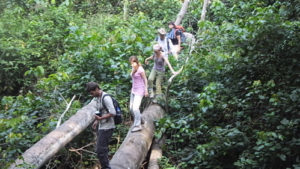 Talking about primates, Maramagambo forest has about 9 species of primates including chimpanzees, L’Hoest’s monkeys, Vervet monkeys, bush baby, red-tailed monkeys and baboons. One of the trails leads to a group of caves that are home to thousands of bats. These bats attract large rock pythons that love to feed on them. It is possible to spot both the bats and pythons from a safe viewing area. The chimpanzees found in Maramagamono are not yet fully habituated but can still be sighted during long walks to the forest interior. A guided walk to Maramagambo forest costs $30.
Talking about primates, Maramagambo forest has about 9 species of primates including chimpanzees, L’Hoest’s monkeys, Vervet monkeys, bush baby, red-tailed monkeys and baboons. One of the trails leads to a group of caves that are home to thousands of bats. These bats attract large rock pythons that love to feed on them. It is possible to spot both the bats and pythons from a safe viewing area. The chimpanzees found in Maramagamono are not yet fully habituated but can still be sighted during long walks to the forest interior. A guided walk to Maramagambo forest costs $30.
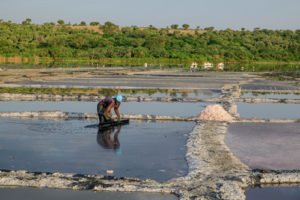 Visiting the Lake Katwe Salt Mines: Lake Katwe is one of the few salt lakes in East Africa. The lake has no wildlife because of the high salinity. Despite that, the area around the lake is a beehive of activity especially during the dry season as villages gather to remove salt from the milky waters. Salt mining has survived in Katwe for centuries and was once very lucrative until other sources and methods of mining where discovered. Most of the salt used in Ugandan homes originates from Lake Katwe. Salt is still mined traditionally using hands despite the dangers posed by the toxic saline waters. A visit to the mines allows tourists to learn about the salt mining industry while also interacting with the local mining community. Most of the salt is sold to manufactures while the rest is taken home by the miners.
Visiting the Lake Katwe Salt Mines: Lake Katwe is one of the few salt lakes in East Africa. The lake has no wildlife because of the high salinity. Despite that, the area around the lake is a beehive of activity especially during the dry season as villages gather to remove salt from the milky waters. Salt mining has survived in Katwe for centuries and was once very lucrative until other sources and methods of mining where discovered. Most of the salt used in Ugandan homes originates from Lake Katwe. Salt is still mined traditionally using hands despite the dangers posed by the toxic saline waters. A visit to the mines allows tourists to learn about the salt mining industry while also interacting with the local mining community. Most of the salt is sold to manufactures while the rest is taken home by the miners.
Cultural Tours: A trip to Africa and Uganda in particular is incomplete without visiting one of the local tribes. While on a safari to Queen Elizabeth National Park, an arrangement can be made to visit the Kikorongo Equator Cultural group to watch and participate in traditional dances, drama, and fire-making. 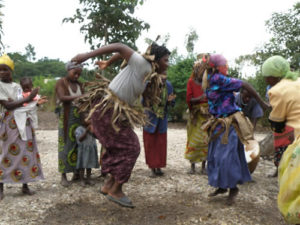 While with the Kikorongo Equator Cultural group, visitors can be taught how to make local art and craft – like weaving baskets using natural fibers. Many of these artifacts are available for sale at reasonable prices. After visiting the group, the leaders can take visitors to individual families to learn about how the locals, cook, manage their gardens, make household items and build grass thatched houses. The opportunities for cultural experiences are numerous with almost every lodge and hotel arranging their own tours for their residents. The Kikorongo cultural group is often called to perform at the lodges in the park. Other cultural encounters include the Katwe Village Walk, local school walks or visiting the Nyanz’ibiri Cave Community.
While with the Kikorongo Equator Cultural group, visitors can be taught how to make local art and craft – like weaving baskets using natural fibers. Many of these artifacts are available for sale at reasonable prices. After visiting the group, the leaders can take visitors to individual families to learn about how the locals, cook, manage their gardens, make household items and build grass thatched houses. The opportunities for cultural experiences are numerous with almost every lodge and hotel arranging their own tours for their residents. The Kikorongo cultural group is often called to perform at the lodges in the park. Other cultural encounters include the Katwe Village Walk, local school walks or visiting the Nyanz’ibiri Cave Community.
Wildlife Conservation and Research Tours: Due to high demand from wildlife enthusiastic, the Uganda Wildlife Authority introduced research tours to learn about wildlife conservation programmes while also allowing tourists close encounters with wildlife. One of the most popular activities is lion tracking in Queen Elizabeth National Park arranged by the Uganda Carnivore Program in close cooperation with the Uganda Wildlife Authority. 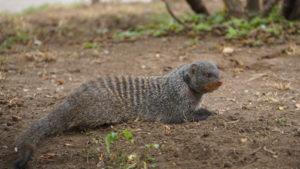 During this activity the big cats are followed using radio collars inserted around their neck. The tourists watch as researchers and park staffs treat the cats and monitor their movements. During the tracking, other cats like leopards and hyenas can also be spotted. Only a few people are allowed to track the lions on a given day and booking should be done in advance. Apart from the lions, there is also mongoose tracking in the Mweya peninsula which costs $30. Tourists who are lucky may also be given an opportunity to take part in periodic animal censuses at a fee of about $100.
During this activity the big cats are followed using radio collars inserted around their neck. The tourists watch as researchers and park staffs treat the cats and monitor their movements. During the tracking, other cats like leopards and hyenas can also be spotted. Only a few people are allowed to track the lions on a given day and booking should be done in advance. Apart from the lions, there is also mongoose tracking in the Mweya peninsula which costs $30. Tourists who are lucky may also be given an opportunity to take part in periodic animal censuses at a fee of about $100.
Hot Air Balloon Rides: Hot Air Balloon safaris are a recent introduction borrowed from Murchison Falls National Park. The activity starts very early in the morning with briefing at the Kasenyi gate of the park. The ride gives breathtaking views of all the park animals from the air with amazing opportunities to take stunning aerial photos of the beautiful park.
N.B: As already noted Queen Elizabeth doesn’t have long dry seasons. The seasons with the heaviest rains are between March to May and September to November. Tourists prefer visiting the park during the driest period between December and February. The best time to visit Queen Elizabeth is just after the rains have stopped and the park is still beautiful green but not muddy. If you are interested in a short tour of the park, then you read about our 2 Days wildlife safari in Queen Elizabeth package.
Accommodation in Queen Elizabeth National Park
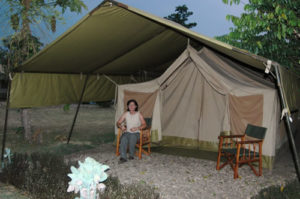 Tourists visiting Queen Elizabeth National Park have a variety of lodges and hotels to choose from. The lodges offer services that are of budget, mid-range and ultra-luxury quality. Most of the lodges are built in typical safari banda style with wood, stone and grass thatched roofs. The final choice of hotel depends on ones interests and budget. The lodges may allow outside camping in selected places for clients with their own tents. Let’s look at some of the hotels on offer:
Tourists visiting Queen Elizabeth National Park have a variety of lodges and hotels to choose from. The lodges offer services that are of budget, mid-range and ultra-luxury quality. Most of the lodges are built in typical safari banda style with wood, stone and grass thatched roofs. The final choice of hotel depends on ones interests and budget. The lodges may allow outside camping in selected places for clients with their own tents. Let’s look at some of the hotels on offer:
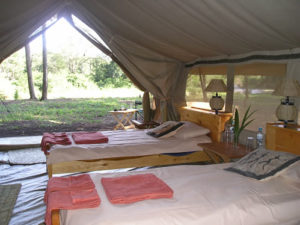 Ishasha Wilderness Camp: This hotel is built near the Ishasha sector along the banks of river Ntungwe. The building and rooms in the lodge are built with stones, time and roofed with grass. The lodge’s lounge area offers great views of the nearby river from wooden but comfortable chairs and coffee tables. The lodge has a bar, a restaurant, a fire place and a curio shop. The 10 self-contained tented rooms have Free Wi-Fi, a verandah, double/twin beds, storage area, a desk, table and carpet and flush toilet bucket. The lodge provides opportunities to spot some of the park animals like elephants, baboons, warthogs and antelopes that come to feed nearby.
Ishasha Wilderness Camp: This hotel is built near the Ishasha sector along the banks of river Ntungwe. The building and rooms in the lodge are built with stones, time and roofed with grass. The lodge’s lounge area offers great views of the nearby river from wooden but comfortable chairs and coffee tables. The lodge has a bar, a restaurant, a fire place and a curio shop. The 10 self-contained tented rooms have Free Wi-Fi, a verandah, double/twin beds, storage area, a desk, table and carpet and flush toilet bucket. The lodge provides opportunities to spot some of the park animals like elephants, baboons, warthogs and antelopes that come to feed nearby.
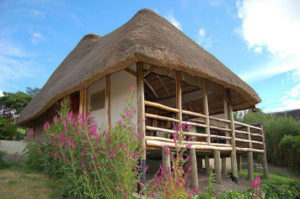 Katara Lodge: This lodge is built near the village of Katara and the Katunguru gate of the park. The lodge has beautiful gardens with buildings that are covered with grass known as bandas. The lodge has a swimming pool, a bar, a restaurant and a lounge area with comfortable sits and tables. Enter inside the rooms and you will find a spacious bedroom, a table, a chair, a flush toilet, showers, bathtubs and a personal verandah. One of the things that make the lodge special is the stunning views of the park, Lake Edward, the Virunga and Rwenzori ranges of mountains. The quality of the service is also great while giving a feeling of being at home away from home.
Katara Lodge: This lodge is built near the village of Katara and the Katunguru gate of the park. The lodge has beautiful gardens with buildings that are covered with grass known as bandas. The lodge has a swimming pool, a bar, a restaurant and a lounge area with comfortable sits and tables. Enter inside the rooms and you will find a spacious bedroom, a table, a chair, a flush toilet, showers, bathtubs and a personal verandah. One of the things that make the lodge special is the stunning views of the park, Lake Edward, the Virunga and Rwenzori ranges of mountains. The quality of the service is also great while giving a feeling of being at home away from home.
Kyambura Gorge Lodge: This lodge is located close to the Kyambura Gorge with beautiful views of the park and the Rwenzori Mountains. The lodge is perfect for travelers who prefer privacy especially honeymooners. The eight bandas are self-contained with Wi-Fi, double/twin beds, lighting, mosquito nets, flush toilet and a shower. Kyambura Gorge Lodge is ideal for primate lovers who wish to visit the unique gorge and primates like baboons and chimpanzee.
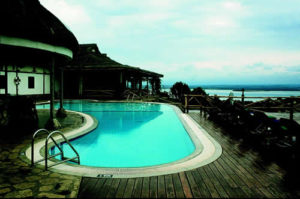 Mweya Safari Lodge: This luxury lodge is built in a strategic location with good views of the great Kazinga Channel. The lodge has both double and twin rooms that can accommodate up to 4 adults. The rooms are self-contained and of high quality with large beds with air conditioning. The lodge also has a bar, a restaurant and a high-end swimming pool. Mweya safari lodge organizes boat cruises to the Kazinga channel using its own fleets of boats for those who wish to have a more private boat cruise without the crowds in the public/government boat.
Mweya Safari Lodge: This luxury lodge is built in a strategic location with good views of the great Kazinga Channel. The lodge has both double and twin rooms that can accommodate up to 4 adults. The rooms are self-contained and of high quality with large beds with air conditioning. The lodge also has a bar, a restaurant and a high-end swimming pool. Mweya safari lodge organizes boat cruises to the Kazinga channel using its own fleets of boats for those who wish to have a more private boat cruise without the crowds in the public/government boat.
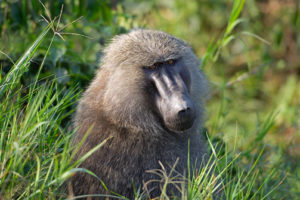 Queen Elizabeth Bush Lodge: The lodge is located in the middle of the park near the Mweya and Kasenyi areas of the park – just off the Mbarara to Kasese road. The lodge has ten self-contained rooms that are made of local material with eco-friendly toilets and showers. Queen Elizabeth Bush Lodge is managed by Nature group of Lodges and is suitable for those who have come for a game drive to the Kasenyi sector or tracking chimpanzees in Kyambura Gorge. Residents can sight many of the park animals like the inquisitive baboons from the comfort of their room verandahs.
Queen Elizabeth Bush Lodge: The lodge is located in the middle of the park near the Mweya and Kasenyi areas of the park – just off the Mbarara to Kasese road. The lodge has ten self-contained rooms that are made of local material with eco-friendly toilets and showers. Queen Elizabeth Bush Lodge is managed by Nature group of Lodges and is suitable for those who have come for a game drive to the Kasenyi sector or tracking chimpanzees in Kyambura Gorge. Residents can sight many of the park animals like the inquisitive baboons from the comfort of their room verandahs.
Jacana Safari Lodge: Jacana Safari Lodge is built on the banks of a crater lake near Maramagambo forest – next to the Mbarara to Katunguru road. The lodge offers a perfect atmosphere for relaxation and getting lost in the African wilderness. Even though camping is not possible at the lodge, it is possible to do so at the nearby Research station. One needs to have this/her own camping equipment, food and tents.
Hippo Hill Camp: The camp is a luxury facility built on a hill at the boundary between the park and Katwe. The camp has beautiful views of the crater lakes of Munyanyange and Lake Edward. There are ten self-contained luxury tents with comfortable beds, hot showers and toilets. The camp also has a bar and restaurant which serves dishes continental dishes. Residents with their own tents can set them up in designated locations.


All the information I needed. Thanks.
Send me contacts of tour operators.
Good evening and how are you sir? I would like to share with you that I have a safari lodge that I am selling. It’s located along Kasese to Mbarara road near Kahendero junction going to lake George. We can talk at length about it. Thank you so much for your attention and have a blessed night.
Thank you very much. l was there in February and really enjoyed the game drive and boat cruise.